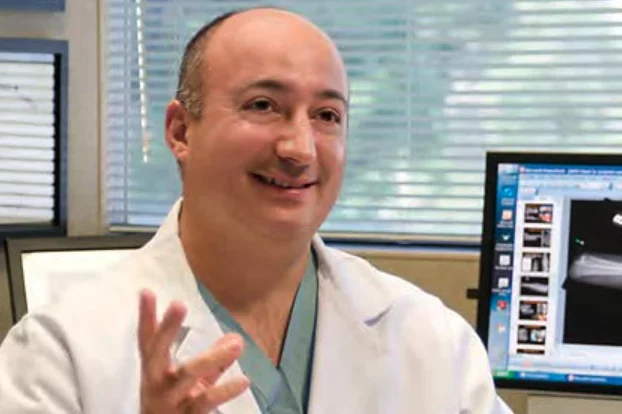Limb Transplantation
Can We Perfect The Limb Transplant Process?

Kodi K. Azari, MD
Professor, Orthopaedic Surgery & Plastic Surgery
Chief, Section of Reconstructive Transplantation, David Geffen School of Medicine at UCLA
New Possibilities for Limb Transplant Patients
Dr. Kodi Azari's composite-tissue transplants give patients functional limbs. His surgical team completed the first double hand transplantation and the first arm transplantation performed in the United States.
In addition to perfecting complex transplant procedures to achieve optimal graft functionality, Dr. Azari develops novel approaches to overcome the debilitating rejection patients could face days, or even years, after surgery.
Dr. Azari wants to give more patients new limbs they can keep—and use—for life.
Groundbreaking Limb Transplant Procedures Advance the Field of Limb Transplantation
Giving patients a limb transplant with optimal sensation and motor function involves matching, connecting, manipulating, and repairing many complex tissues and networks, including skin, nerves, muscles, blood vessels, and tendons.
Already a world leader in composite tissue allotransplantation, Dr. Azari wants to keep fine-tuning surgical techniques and anti-rejection treatments—making the experimental procedure a clinical reality.
Early Success: First Hand Transplant in the Western United States
Dr. Azari and his team performed an intense 14-1/2-hour operation to give a young mother a new hand. Her progress in regaining functionality and sensation inspired optimism for the future of hand transplantation. Read more in A Second Hand, a Second Chance, published in U Magazine.
Part of a clinical trial, the landmark procedure also allowed Dr. Azari and his team to advance and expand the UCLA Hand Transplant Program by affirming the:
- Success of surgical techniques
- Adequate return of limb function
- Safety and efficacy of anti-rejection regimens
Advancing Techniques: First-Hand Transplant to Incorporate Amputation
Dr. Azari suspected that integrating donor limb amputation into the transplantation process would improve outcomes by producing better nerve, tendon, and vessel preservation. He validated his theory in one marathon 2016 procedure where his team amputated a hand from a still-living donor and, within hours, successfully transplanted it onto a patient in need. Read more in New Direction in Hand Transplantation, published in U Magazine.
Within two months, the recipient was tying his own shoes. Such simple successes typically take up to two years after surgery to accomplish.
Dr. Azari searched across Southern California to recruit surgeons with the precise skills needed for this surgery. Their success demonstrated the value of cross-institutional collaborations in developing the techniques and protocol necessary for limb transplantation to gain traction around the world.
UCLA Health Hand Transplant Program
The Future for Limb Transplant Patients—A Life-Changing Treatment
Dr. Azari envisions a future where people see limb transplantation as a safe, standard procedure instead of an experimental one. He wants to leverage limb transplantation to improve as many lives as possible.
Limb transplants restore the human touch. Imagine a hand transplant recipient holding her infant son’s hand for the first time. That’s the kind of life-changing capability Dr. Azari wants to restore through his work.
“ ”